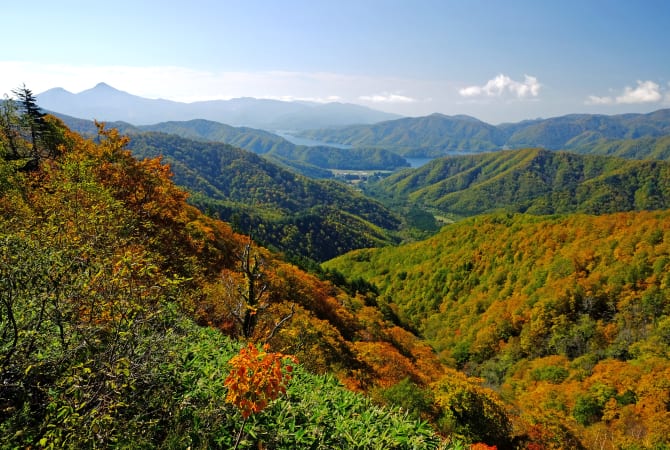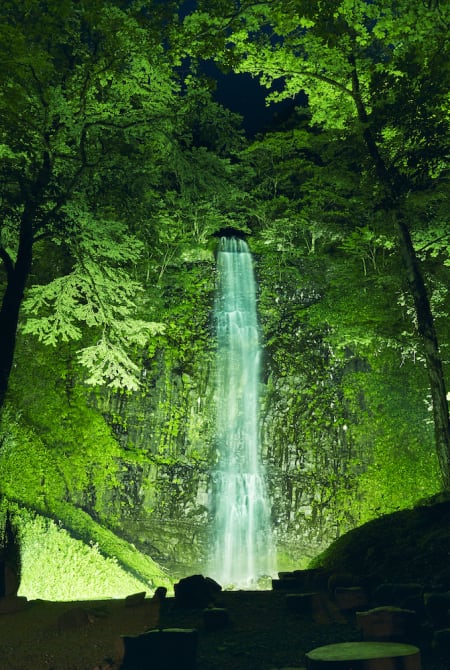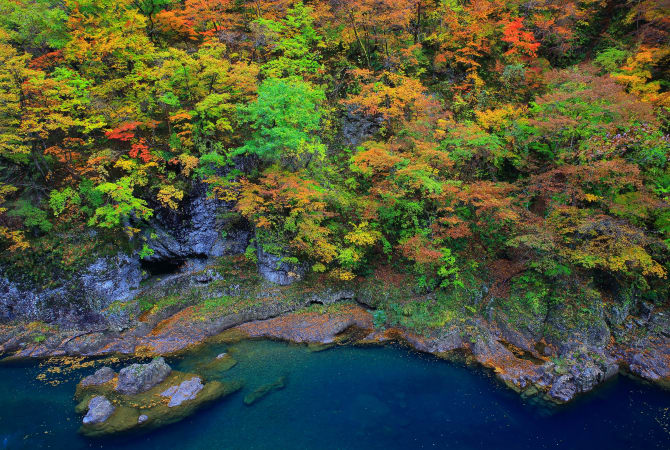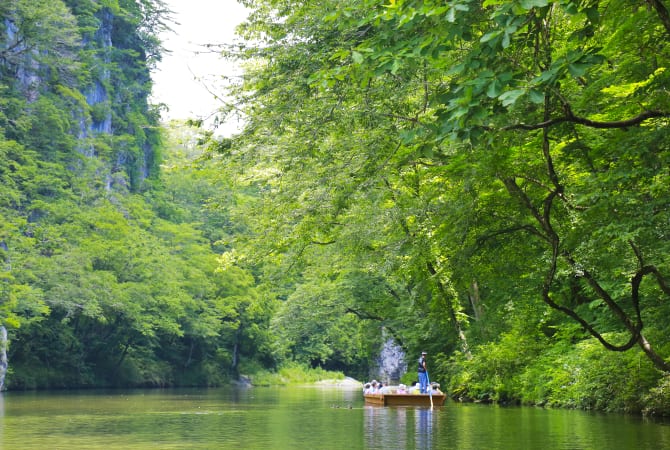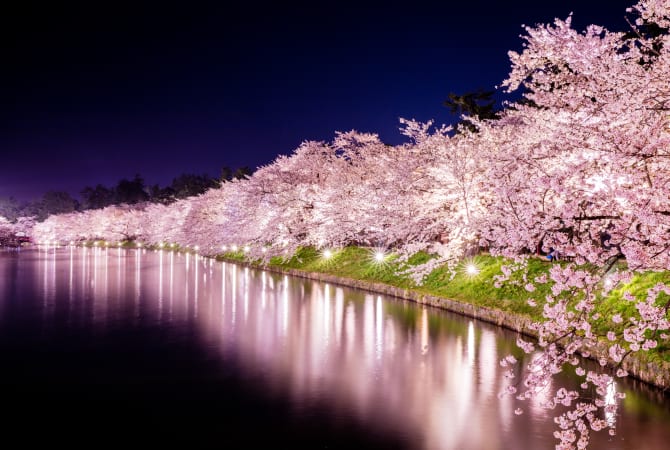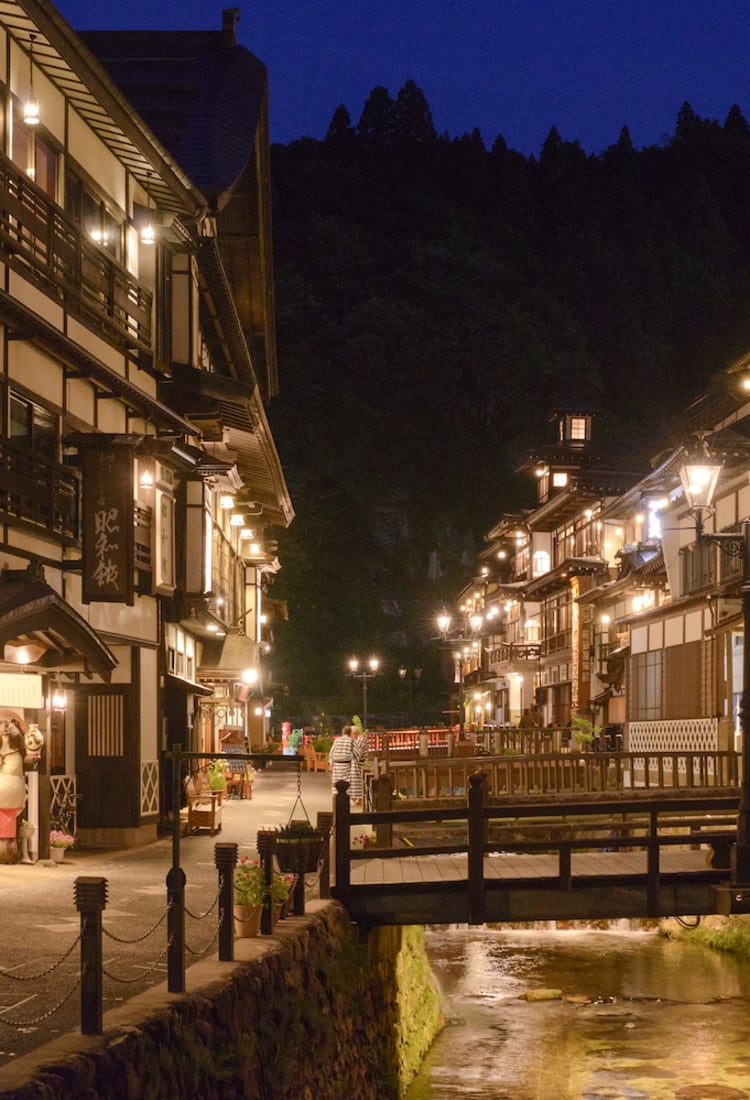

Tohoku Yamagata Malerische Onsen und riesige schneebedeckte Tannen
Yamagate gehört zum südlichen Tohoku und ist bekannt für seine schneebedeckten Tannen, die eindrucksvollen Skigebiete und heißen Quellen
Die Präfektur Yamagata ist im Westen vom Japanischen Meer und im Osten von Bergen eingeschlossen und durch ihre Landschaft geprägt. An der Küste liegen die Hafenstädte Tsuruoka und Sakata. Tief im Landesinneren befindet sich Zao Onsen, ein Gebiet mit heißen Quellen, wenig überlaufenen Skipisten und aufsehenerregenden schneebedeckten Tannen. Der Bergtempel Yama-dera ist das Thema eines der berühmtesten Haikus. Der malerische Erholungsort Ginzan Onsen mit seinen heißen Quellen befindet sich auf dem Gebiet einer ehemaligen Silbermine.
Anfahrt
Die Präfektur Yamagata ist von Tokyo aus mit dem Hochgeschwindigkeitszug zu erreichen. Alternativ können Sie auch zum Flughafen Yamagata oder Shonai fliegen.
Der JR Yamagata Shinkansen bedient die Strecke durch Yamagata und verbindet einen Großteil der Präfektur mit Tokyo. Die Fahrt bis zum nördlichen Endbahnhof Shinjo nimmt 3 Stunden in Anspruch. Wenn Sie von Tokyo oder weiter weg fliegen wollen, ist Sendai der nächstgelegene wichtige Zielflughafen.
Nicht verpassen
- Zao Onsen, ein Skiort mit heißen Quellen, in dem riesige schneebedeckte Tannen stehen
- Yama-dera oder Risshaku-ji, ein Tempel auf einem beeindruckenden Hügel
- Der Gassan, der höchste der drei heiligen Berge der Dewa Sanzan
- Burg Yamagata, eine bescheidene, historische Burg in der Stadtmitte von Yamagata
Sehenswürdigkeiten Yamagata nach Bereich
angesagte Attraktionen in Yamagata
Lokale Spezialitäten
-
Zao Takayu-Puppen
Obwohl Kokeshi-Puppen in ganz Japan zu finden sind, ist ihre Gestaltung jeweils sehr unterschiedlich. Die ersten Puppen wurden vor über 400 Jahren in Zao, Yamagata, hergestellt und haben sich im Laufe der Zeit kaum verändert. Auf einen langen zylindrischen Holzkörper wird ein runder Kopf aufgesteckt und dann werden beide Teile vom Kunsthandwerker in Rot und Schwarz handbemalt.

-
Imoni
Imoni ist ein Rindfleisch- und Gemüseeintopf, der in der Präfektur Yamagata verbreitet ist. Dabei werden dünne Scheiben Rindfleisch, Tarowurzel, Konnyaku, grüne Zwiebeln und verschiedene saisonale Zutaten in einem riesigen Eisenkessel gegart. Die Zutaten werden langsam in einer gesüßten Sojasauce gekocht. Wenn Sie sich in der Yamagata-Region aufhalten, sollten Sie diese köstliche Komfortnahrung nicht verpassen.

-
Akebi
Die Erntezeit für Akebi ist von Ende August bis Mitte Oktober. Diese als Prinzessin der Berge bekannte Frucht mit ihren tiefvioletten Blüten hat eine gewisse Süße, ist aber vor allem für ihre Farbe bekannt.

-
Obanazawa-Wassermelonen
Große Temperaturschwankungen zwischen Nacht und Tag in Yamagata verleihen diesen Wassermelonen einen höheren Zuckergehalt und eine enorme Süße. Die Obanazawa-Wassermelone ist in Wein, Soda und in verschiedenen Süßigkeiten enthalten.

-
Yamagata-Kirschen
Nachdem 1876 Kirschen in Yamagata eingeführt wurden, werden heute 70 % aller japanischen Kirschen in der Präfektur geerntet. Yamagata-Kirschen sind groß, saftig und sehr süß und haben eine lange Haltbarkeit.

-
Yonezawa-Rindfleisch
In Japan gilt Yonezawa-Rindfleisch als eine der drei bekanntesten Sorten. Der reiche Geschmack und die Marmorierung von Yonezawa-Rindfleisch sind das Ergebnis einer lang andauernden Mast, bei der die Rinder mit Reisstroh gefüttert werden.

-
Uetsu Tilia-Rindentextilien
Uetsu Shinafu gehört zu den drei ältesten Textilienarten Japans. Mit seiner glatten Struktur, langlebig und wasserabweisend, ergab dieses Gewebe die perfekte Arbeitsbekleidung. Heute werden kostbare Tilia-Rindenstoffe zu Accessoires verarbeitet wie Hüte und Obi-Schärpen.

-
Tendo – japanische Schachfiguren
Der Rang eines Spielers bestimmt die Züge im Shogi, der japanischen Version des Schachspiels. Mit ähnlichen Formen machen die Kanji-Beschriftungen das Tendo Shogi Koma als solches erkennbar. Handwerker drücken den Spielfiguren mit detaillierter Gravur, Prägelack und kalligraphischem Stil ihren individuellen Stempel auf.

-
Yamagata-Eisenwaren
Yamagato imono sind Metallgussteile, deren Herstellungstechnik bis ins 6. Jahrhundert zurückreicht. Feinste Modelle, Texturen und exakte Formen werden mithilfe von Präzisionssandguss gefertigt. Mit diesen uralten Techniken entstehen vielfältige Eisenwaren, vor allem Chagama, die japanischen Teezeremoniekessel.

Saisonale Highlights
-
Frühjahr
Die Kirschbäume blühen besonders schön im Kajo-Park der Stadt Yamagata sowie im Tsukioka-Park vor dem Hintergrund von Burg Kaminoyama.

-
Sommer
Der Sommer ist die beste Zeit, um die preisgekrönten Kirschen dieses Gebiets zu kosten oder in Higashine selbst zu pflücken. Bei zahlreichen Veranstaltungen, die in der Präfektur abgehalten werden, können Sie sich unter die Einheimischen mischen, etwa beim großen Hanagasa-Fest.

-
Herbst
Die Festsaison geht im Herbst mit Veranstaltungen rund um die Ernte weiter, etwa mit dem Imoni-kai-Kartoffelfest. Die Blätter beginnen sich Ende September zu färben und lockt Wanderurlauber in die malerischen Bergschluchten im östlichen Yamagata.

-
Winter
Fahren Sie Ski, wandern Sie mit Schneeschuhen, bewundern Sie hochaufragende Tannen, die mit Raureif bedeckt sind, oder flüchten Sie an einem der Erholungsorte in eine der traditionellen heißen Quellen aus der Kälte. Yamagata bleibt auch im Winter lebendig, wenn das Land mit Schnee bedeckt ist.



















































